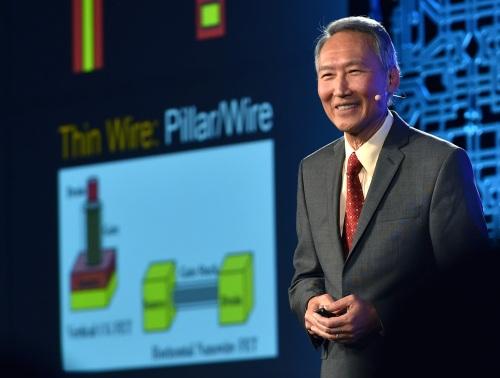SANTA CLARA, Calif.—Don’t worry about the end
of Moore’s law, there are plenty of good ideas on the semiconductor road
map, according to Chenming Hu, a university researcher credited as
being the father of the FinFET.
Hu described new transistor concepts that could fuel the chip industry for decades in a talk at the annual Synopsys Users Group event here.
His presentation came a day after the company’s chief executive
expressed similar optimism, citing progress in software design tools.“I really mean it when I say this industry goes on another 100 years, in part because there are no alternatives and the world needs us,” Hu told an audience of several hundred chip designers here.
“We all know but don’t like to say out loud that transistor size reduction is a game that has an end and we are racing to that end,” but that doesn’t mean the end of the semiconductor industry and the high tech sector build on top of it, Hu said.

Chenming Hu sees a long future for thin-body transistors like FinFETs and FD-SOI. (Images: Synopsys)
“Essentially it puts a voltage amplifier into the dielectric…the idea is you get the same performance at lower Vdd,” Hu explained.
The design could help engineers reduce Vdd to levels below 0.3 V, overcoming limits that could pave the way to decades of new devices.
The NC-FET has “not been on anyone’s radar because we’ve been developing it on a shoestring but now we see it’s promising and we’re looking for support,” said Hu. “There are orders of magnitude more money going into spintronics than NC-FET, I think we are the only ones in the industry working on it,” he said.
Recently, Berkeley set up a new center to focus on the NC-FET. Intel and TSMC joined, paying $140,000 each. “If we could get a handful of members we could do great things, and that’s still smaller than a typical government contract,” he said.
Separately a handful of companies including Globalfoundries, Samsung, Synopsys and TSMC joined the Berkeley Device Modeling Center that creates BSIM models that translate physical fab data for software design tools.
“We are preparing the compact models for new devices wherever they come from free of royalty, but nothing is really free,” Hu said noting the models for FinFETs took 11 years work from more than a dozen researchers.
http://www.eetimes.com/document.asp?doc_id=1329333
No comments:
Post a Comment